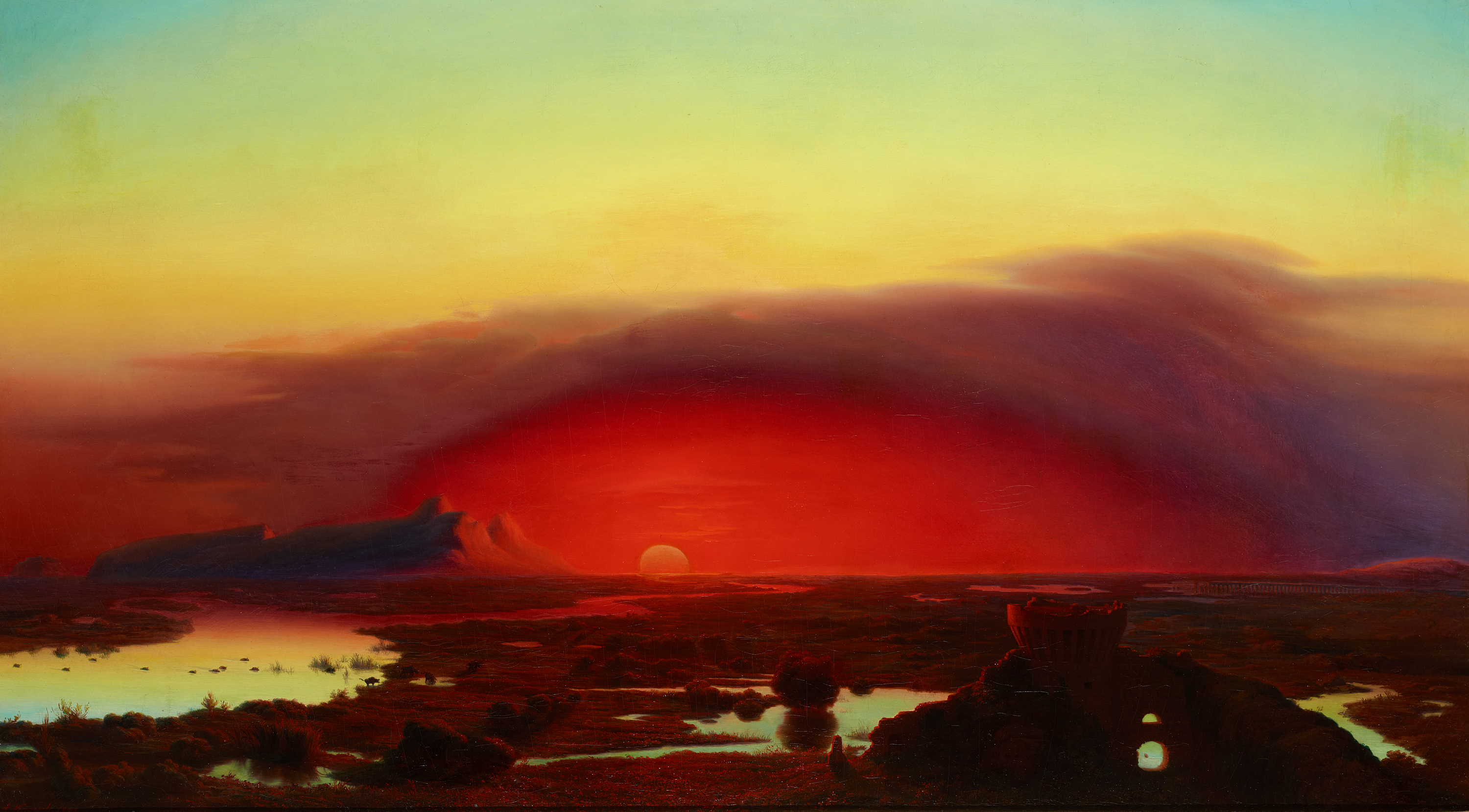With the exhibition on the work of August Kopisch (1799 – 1853), the Alte Nationalgalerie is focusing on one of the most versatile artists of the 19th century. Like no other, Kopisch, who was born in Breslau, combined painting, poetry, research spirit and inventiveness in his work. He made a name for himself when he discovered the Blue Grotto on the island of Capri in 1826, which has been a popular destination for travelers ever since. As a painter, Kopisch created pictures with his own poetic appeal. Magical longing blue or voluptuous sunset red were his preferred colors, with which he impressively reproduced light phenomena. One of his major literary works is the metric translation of Dante's “Divine Comedy”. However, his poem “The Heinzelmännchen”, which is still popular today, would be best known.
Kopisch took drawing lessons early on. At the age of 15 he left his hometown to study painting first at the art academy in Prague, then in Vienna and then in Dresden. In 1824 he set off for Italy, spent a year in Rome and arrived in Naples in the spring of 1826. The southern landscape and Neapolitan life inspired him to write popular poetry, translations and colorful paintings. In 1829 Kopisch returned to Breslau. Together with Carl Ferdinand Langhans he built a pleorama of the Gulf of Naples there in 1831. In 1833 Kopisch moved to Berlin and socialized with poets and visual artists. He met Alexander von Humboldt, Friedrich Wilhelm Schelling and Crown Prince Friedrich Wilhelm, who, after his accession to the throne in 1840, appointed him as an art expert in the Royal Court Marshal's Office and granted him a pension in 1841. During his years in Berlin, Kopisch published important poetic works and regularly presented his paintings at the academy exhibitions.
